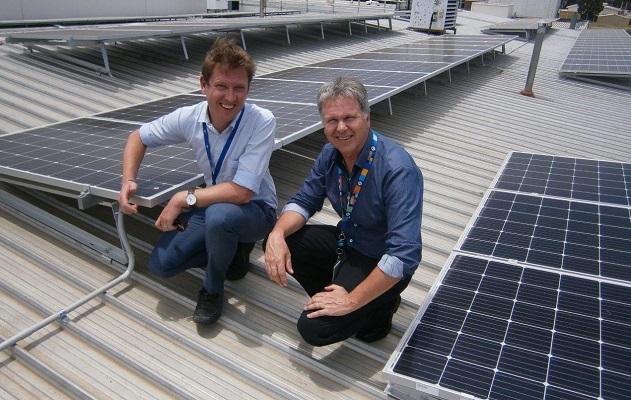We have set some bold targets for sustainability across our organisation. Among other goals, we're aiming for net zero emissions (NZE) by 2025 for our Newcastle site and by 2030 for the whole organisation. Beyond that, our aim is to reach net zero by 2050 taking into account the emissions through our supply and value chains.
To find out exactly what this means let’s go to those in the know. Dan Linsell and Tony Hudson from our Environmental Sustainability team explain more.
What does net zero emissions mean?

Net zero emissions describes the point where the amount of greenhouse gas released into the atmosphere is equally balanced with the gas being removed from the atmosphere.
We will reach net zero by reducing our carbon emissions from the electricity, gas, resources and materials we use. As well as by our initiatives to offset emissions.
There are a number of ways we can offset our emissions and reach or go beyond net zero. These include generating or sourcing renewable energy supply, procuring products with a low emission footprint and storing carbon in vegetation.
Why start at Newcastle?
Newcastle is home to our Energy Centre and National Solar Energy Centre. As headquarters for our energy research, featuring energy test-labs for industry, it's well placed to kick-off our net zero plan. And we have a well-defined plan when it comes to reaching net zero at Newcastle and more widely. Our Sustainability Team Project Engineer, Dan Linsell explains.
“We’ve been quietly working our way towards net zero over a number of years through projects like the national solar photovoltaic (PV) roll-out and the signing of a renewable electricity power purchase agreement (PPA) in 2020.”
Dan led the project to install 13,000 solar PV panels with about five megawatts capacity across 11 sites. He’s also been part of the team that secured the 10-year PPA to meet our electricity needs across numerous sites.
We have been investigating new emission reduction opportunities over several years with this work culminating in a net zero roadmap.
Bringing science into our NZE equation
As part of the roadmap, our plan is to test and trial emerging technologies and emission reduction strategies at exemplar sites. We want to see if they are feasible for all our sites and facilities.
Newcastle Site Leader Greg Wilson said his site is well equipped to formulate our plans for net zero.
“Our Newcastle Energy Centre has long been a test-bed for technologies that are leading the way to find and demonstrate energy solutions for Australia,” Greg said.
“Our world-class facilities evaluate technologies and methods to drive energy efficiency, generate renewable energy, store energy and reduce emissions.
“It makes perfect sense to harness the best of that science, engineering and assessments and apply these to the operation of the Newcastle site. From there we can broaden the application across CSIRO sites. At the same time we’re helping Australian industry to drive their net zero aspirations.”
It’s an internal vision that’s in sync with our plans to use our science, technology, innovation and collaboration to help Australia navigate the pathways to net zero emissions.
What’s next for Newcastle?
Close to 90 per cent of the energy sources used at Newcastle are now zero emissions.
With 425 kilowatts (kW) of solar and wind energy infrastructure, the site already generates 30-40 per cent of its electrical energy. It also has 600 kilowatt hours (kWh) of battery storage.
One option is to produce all our energy needs on site. We've modelled an additional 460kW of solar PV which would bring the total to about 880kW of solar PV. The proposed plan would see installation of solar PV systems across carparking spaces and on remaining accessible roof area to achieve this target.
Greg said the team is looking at how it can lower the emissions' footprint of the operations.
"We have a lot of options to go past the NZE targets. For example by trialling emerging technologies such as hydrogen-based solutions. Also, by optimising site loads, control of storage and energy export using existing on-site batteries,” Greg said.
"Decommissioning the gas turbine and electrifying all hot water plant and equipment will make a key contribution. So will transitioning our vehicle fleet to electric or hydrogen powered alternatives."
Beyond Newcastle
Tony Hudson, Manager, Environmental Sustainability amplifies the vision for Newcastle and the organisation.
“To go even further at Newcastle, we can introduce new or improved battery storage. We can also plant trees, apply some of the innovative ideas from our science teams or potentially seek carbon offsets,” Tony said.
“Some of the strategies tested at Newcastle may be feasible at some or all sites. These actions can be directly translated into our operations.
“So Newcastle will be the vital next step in propelling us to the 2030 NZE target for CSIRO. Along the way we aim to introduce further exemplar sites in line with the NZE aspirations of our Sustainability Strategy 2020-2030.”
